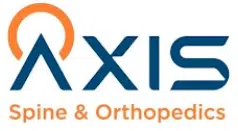Axis Spine And Orthopedics Can Be Fun For Anyone
Axis Spine And Orthopedics Can Be Fun For Anyone
Blog Article
The Buzz on Axis Spine And Orthopedics
Table of ContentsAxis Spine And Orthopedics - TruthsThe Only Guide to Axis Spine And OrthopedicsRumored Buzz on Axis Spine And OrthopedicsFascination About Axis Spine And Orthopedics
An orthopedic doctor is a physician who specializes in treating issues of the bones, joints, and connective cells, and ensuring you preserve a healthy and balanced bone and joint system., we have actually extremely certified orthopedic specialists that are capable of dealing with people of all ages. I obtained included in study throughout my initial year of clinical institution, and I started making links with orthopedic doctors early on.
Review the post-operative treatment strategy with your specialist. Arrange for transport to and from the medical facility on the day of surgical treatment.
Getting My Axis Spine And Orthopedics To Work

Your medical professional will supply plenty of details regarding post-operative treatment, including exactly how to stay tidy and keep the surgical area tidy. Following these ideas can prepare you literally and emotionally for your orthopedic surgery. Bear in mind to preserve a favorable overview and trust your medical team's experience, adding to a smoother recovery process.

Nobody anticipates you to recognize anything, so do not attempt to remember a lot of random truths. Or else, joint pain can truly mess up your life.
Common conditions dealt with by orthopedic doctors are: Cracks and Bone Trauma: Broken bones and other injuries from mishaps or impacts. Bone Cancer Cells: Growths in the bones. Orthopedic Trauma: Extreme injuries affecting bones, joints, or soft cells.
Sprains and Strains: Injuries to ligaments and muscles. Tendinitis: Swelling of the tendons. Orthopedic doctors execute a variety of treatments to assist individuals with musculoskeletal problems. Usual instances are knee and hip replacements. Joint Reconstruction: Restoring a damaged joint to restore its feature. Bone Grafting: Taking bone from one part of the body and transplanting it to another area to fix and restore harmed bones. Reconnecting Nerves: Fixing damaged nerves to restore activity and feeling. Back Disk Replacement: Changing a damaged spinal disk with a man-made one to alleviate discomfort and bring back function. You'll need to take and pass the Medical College Admission Test( MCAT). This standardized test analyzes your understanding and skills needed for success in medical college. Clinical college is an intense

Not known Incorrect Statements About Axis Spine And Orthopedics
Next, they finish an orthopedic residency. It's typically five years and gives hands-on knowing in a clinical setting. Limited motion because of discomfort. Rigidity. Appointments typically consist of: Reviewing your signs and symptoms, medical history and way of life. A physical exam, consisting of relocating the affected joint in specific methods. Imaging researches, such as an X-ray. Description of your medical diagnosis.
Treatment recommendations. Some conditions require added imaging, like a CT check or MRI for more extensive sights of the painful location. Your orthopedist will suggest treatments to reduce symptoms till you receive a diagnosis. Orthopedic surgeons concentrate on nonsurgical and medical strategies. For certain kinds of orthopedic trauma or genetic problems, surgery is usually the first line of treatment. For the majority of other problems, orthopedists try nonsurgical therapies. It might take greater than one kind of therapy to attain enduring relief. Selecting the right is crucial for successful medical outcomes and enhanced individual recovery. With a large array of choices available on the market, it can be frustrating for both doctors and individuals to make a notified choice. The leading five variables to take into consideration when selecting an orthopedic implant are medical compatibility, cost-effectiveness, factors to consider for alteration surgical procedure, patient-specific variables, and the design and innovation of the dental implant. They are available in various shapes, sizes, and materials, each serving a certain objective based on the individual's needs. Recognizing the essentials of orthopedic implants is essential before diving into the decision-making procedure. One of the leading factors to consider when choosing an orthopedic implant is its compatibility with the surgery. Various implants are created for different medical methods and approaches. The orthopedic implant need to be particularly designed to fit the client's composition and guarantee stability during the healing procedure. Surgical compatibility involves variables such as dental implant dimension, form, and product. The success of orthopedic treatments relies greatly on the correct option and placement of implants that work with the individual's composition and case history. By prioritizing person security and health, orthopedic doctors can attain effective results and provide the finest of like their people. Specialists must meticulously take into consideration the biomechanical residential or commercial properties of the implant and exactly how it will integrate with the patient's bone framework. This will certainly add to better medical results, minimized difficulties, and much shorter healing time. When choosing implants for a client, it is vital to consider a selection of patient-specific elements that can affect the success and outcome of the treatment. These factors encompass the patient's age, bone quality and amount, dental wellness condition, medical history, lifestyle practices, and aesthetic choices. For older clients with jeopardized bone density, much shorter implants or grafting treatments might be valuable to provide the required stability and assistance. 3. Is the size of the orthopedic implant an essential consideration? Just how does it impact the procedure and the client's healing? Yes, the size of the dental implant is essential as it should match the client's structure for appropriate fit and functionality. 4. Can the patient's age and lifestyle contribute in selecting the most ideal orthopedic dental implant? Definitely. Exactly how does the expense of an orthopedic implant aspect right into the decision-making procedure, and exist methods to balance quality with cost? The expense of the implant is an essential factor to consider, but it needs to not be the single determining variable. Stabilizing high quality with affordability entails weighing various dental implant choices 'long-term benefits and prospective complications. Report this page